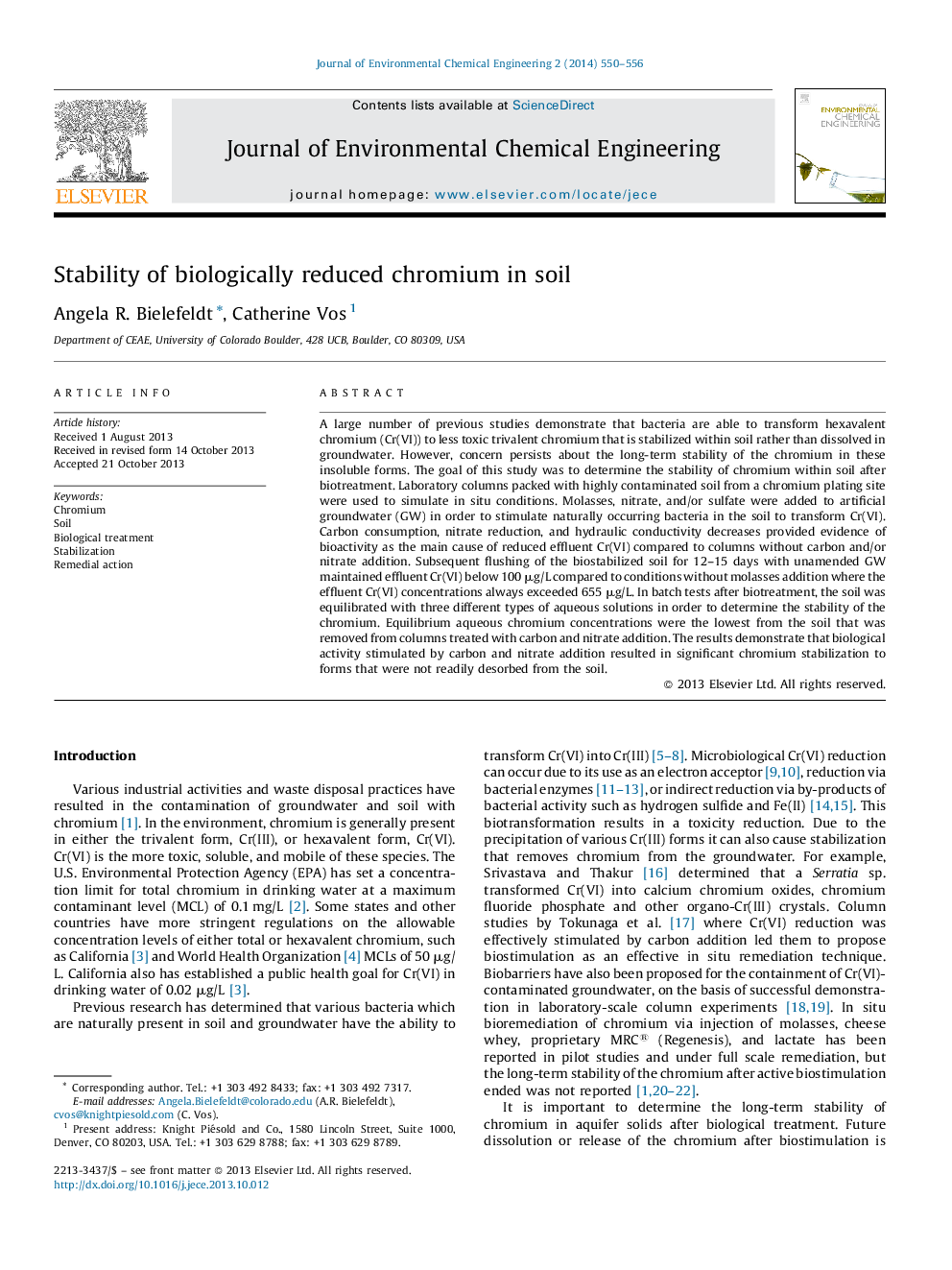| کد مقاله | کد نشریه | سال انتشار | مقاله انگلیسی | نسخه تمام متن |
|---|---|---|---|---|
| 222172 | 464270 | 2014 | 7 صفحه PDF | دانلود رایگان |
A large number of previous studies demonstrate that bacteria are able to transform hexavalent chromium (Cr(VI)) to less toxic trivalent chromium that is stabilized within soil rather than dissolved in groundwater. However, concern persists about the long-term stability of the chromium in these insoluble forms. The goal of this study was to determine the stability of chromium within soil after biotreatment. Laboratory columns packed with highly contaminated soil from a chromium plating site were used to simulate in situ conditions. Molasses, nitrate, and/or sulfate were added to artificial groundwater (GW) in order to stimulate naturally occurring bacteria in the soil to transform Cr(VI). Carbon consumption, nitrate reduction, and hydraulic conductivity decreases provided evidence of bioactivity as the main cause of reduced effluent Cr(VI) compared to columns without carbon and/or nitrate addition. Subsequent flushing of the biostabilized soil for 12–15 days with unamended GW maintained effluent Cr(VI) below 100 μg/L compared to conditions without molasses addition where the effluent Cr(VI) concentrations always exceeded 655 μg/L. In batch tests after biotreatment, the soil was equilibrated with three different types of aqueous solutions in order to determine the stability of the chromium. Equilibrium aqueous chromium concentrations were the lowest from the soil that was removed from columns treated with carbon and nitrate addition. The results demonstrate that biological activity stimulated by carbon and nitrate addition resulted in significant chromium stabilization to forms that were not readily desorbed from the soil.
Journal: Journal of Environmental Chemical Engineering - Volume 2, Issue 1, March 2014, Pages 550–556
